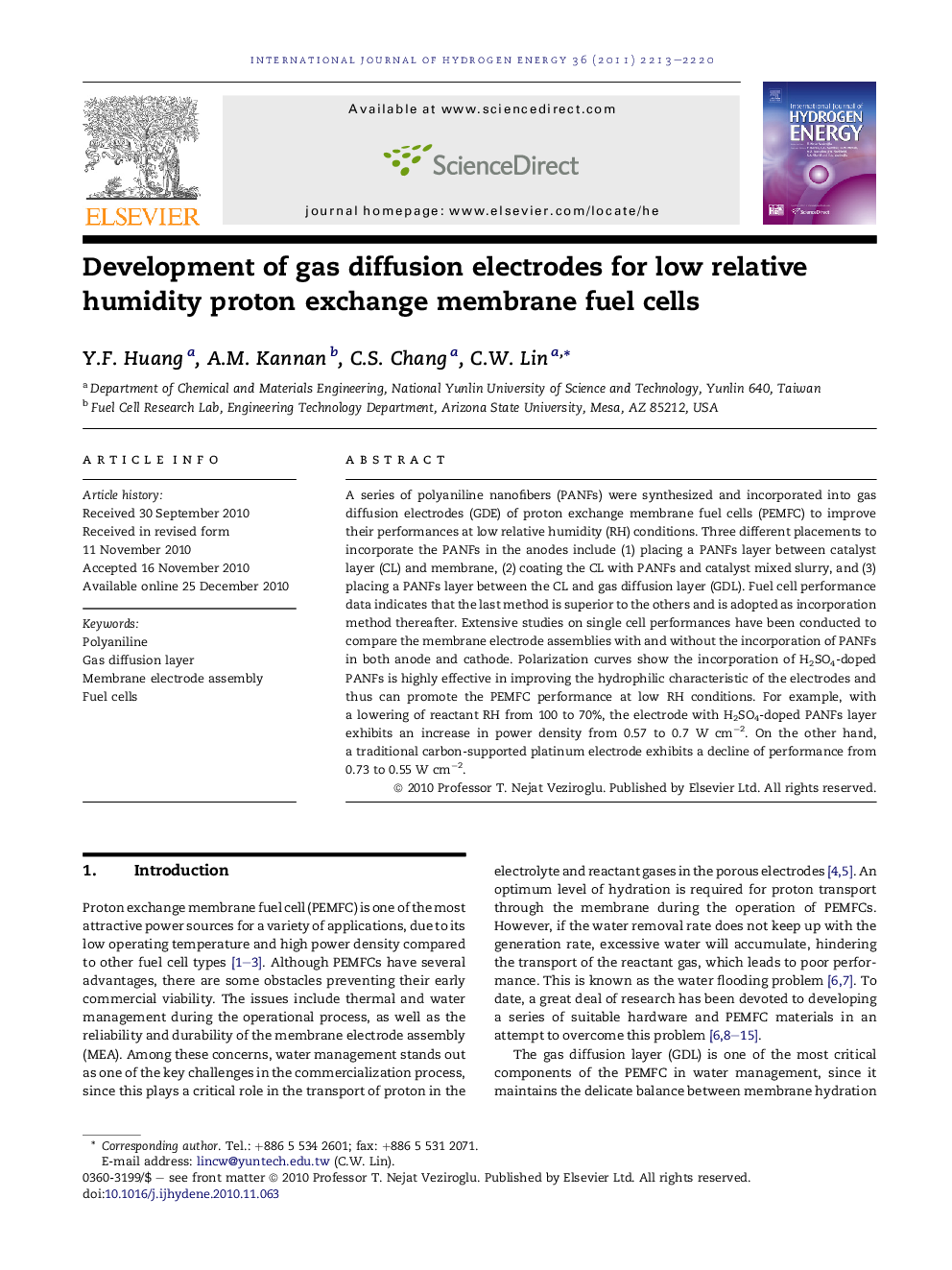| Article ID | Journal | Published Year | Pages | File Type |
|---|---|---|---|---|
| 7724443 | International Journal of Hydrogen Energy | 2011 | 8 Pages |
Abstract
A series of polyaniline nanofibers (PANFs) were synthesized and incorporated into gas diffusion electrodes (GDE) of proton exchange membrane fuel cells (PEMFC) to improve their performances at low relative humidity (RH) conditions. Three different placements to incorporate the PANFs in the anodes include (1) placing a PANFs layer between catalyst layer (CL) and membrane, (2) coating the CL with PANFs and catalyst mixed slurry, and (3) placing a PANFs layer between the CL and gas diffusion layer (GDL). Fuel cell performance data indicates that the last method is superior to the others and is adopted as incorporation method thereafter. Extensive studies on single cell performances have been conducted to compare the membrane electrode assemblies with and without the incorporation of PANFs in both anode and cathode. Polarization curves show the incorporation of H2SO4-doped PANFs is highly effective in improving the hydrophilic characteristic of the electrodes and thus can promote the PEMFC performance at low RH conditions. For example, with a lowering of reactant RH from 100 to 70%, the electrode with H2SO4-doped PANFs layer exhibits an increase in power density from 0.57 to 0.7Â WÂ cmâ2. On the other hand, a traditional carbon-supported platinum electrode exhibits a decline of performance from 0.73 to 0.55Â WÂ cmâ2.
Related Topics
Physical Sciences and Engineering
Chemistry
Electrochemistry
Authors
Y.F. Huang, A.M. Kannan, C.S. Chang, C.W. Lin,
